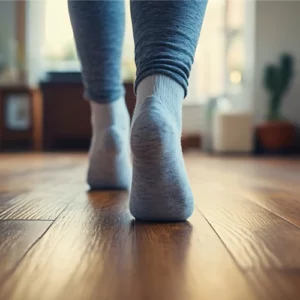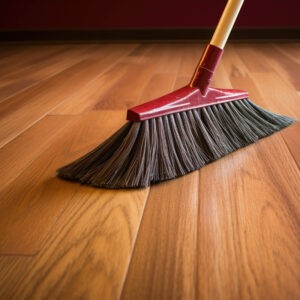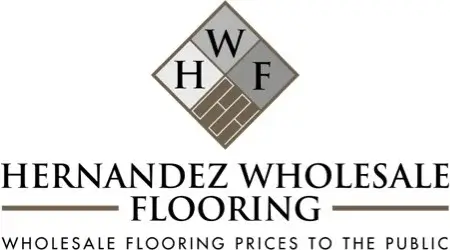How To Protect Your Floors from Sun Damage and Fading
A sunlit room is cozy and inviting, but it can affect your floors. The UV rays from sunlight can cause wood, vinyl, and laminate flooring to fade and warp, altering the look of your space. Protecting your floors from sun damage is essential for prolonging their value and beauty.
We’ll explore how sunlight affects wood floors and the best flooring options for sunny rooms. We’ll also look at tips for how to prevent floor fading so you can keep your home looking like new.

How Sunlight Causes Floor Damage
Sunlight is made up of several different types of light, including ultraviolet (UV) rays, visible light, and infrared (IR) light. When sunlight strikes your floor, the material reacts to these different rays, leading to fading, darkening, cracking, and other damage. How your floor reacts to sunlight depends on the type, color, and finish of your flooring.
The most common culprit for destruction is UV rays. Many domestic woods, like oak, maple, and hickory, fade when exposed to UV rays. On the other hand, woods like cherry or tigerwood can darken dramatically. If your wood contains an oil-based finish, it may react with light to create a yellowish look.
Best Flooring Options for Sunlit Rooms
Vinyl flooring is generally considered to be the best flooring for sun exposure. You can find modern vinyl floors specially rated for UV resistance, so they retain their color and quality longer than most other materials. Extremely high temperatures can impact some vinyl, but vinyl is highly durable overall.
Other options are porcelain and ceramic tiles, which are less popular for everyday use. While vinyl can mimic the look of wood and other materials, tile has a beautiful but distinct look. It also tends to come at a higher price point, whereas vinyl is more affordable and easier to repair. Both tile and vinyl are among the most durable flooring options for high-traffic areas, making them an all-around viable option for reducing wear and tear.
Tips for Preventing Fading and Sun Damage on Wood Floors
With an average of 7 to 11 hours of sunshine every day, sunlight protection is a must in Orange County. While sun damage won’t happen in a single day, the slow accumulation builds up and damages your floors. The following tips can help provide UV protection for hardwood floors and slow or reduce the look of sun damage.
Add UV Floor Inhibitors
While no UV inhibitor can completely block sun damage, it can slow the process. High-quality water-based finishes are the best bet. Avoid oil-based finishes in sunny rooms, as these can fade to a yellow color.
If you’re using stained wood floors, aim for pigment rather than dye stains, as these retain their color better in sunlight.
Rearrange Your Space
Now and then, rearrange any rugs and furniture in sunny rooms. You can also remove rugs during the sunniest months — although your floor will be more exposed to sunlight, you won’t end up with the dramatic fade line that results from only one section being exposed to light. Moving your furnishings around helps dissipate light so that any fading happens evenly in the space.
Consider Window Treatments
Like floor treatments, window treatments can’t provide 100% protection. However, they can dramatically reduce damage. UV and IR-blocking window films can be applied to your current windows, or you can install new low-emissivity (low-E) coated windows. These have the bonus of reducing heat and energy loss, which can lower your home heating and cooling costs.
Maintain Regular Floor Care
Regular hardwood care and maintenance also help keep your wood floors looking beautiful. Spills, scratches, and wear can damage UV-resistant coatings and expose your floors to faster fading, so cleaning and other maintenance practices can reduce this effect.

Protecting Vinyl and Laminate Flooring from Sun Exposure
Like wood floors, vinyl and laminate can fade and discolor in sunlight. They may also warp or buckle in intense instances due to the sun’s heat.
Some wood floor protection tips, such as rearranging furniture and installing low-E windows, also work well to prevent sun damage to vinyl flooring. Additionally, you can try vinyl and laminate floors that are specifically rated for UV resistance. These are labeled as high UV resistance and are designed to retain their color longer during sun exposure.
Like wood floors, you can also apply a UV-resistant coating to vinyl and laminate. However, both built-in and layered coatings only provide so much protection. The best solution for preserving your floors is to block sunlight with window treatments, coverings, and rugs.
Using Window Coverings and UV Protection for Floors
The best defense is to block sunlight completely, preventing it from hitting your floors. The thicker the curtain, the more effective it is at preventing floor damage. Light-blocking curtains are the most efficient, but even lighter fabrics will slow the damage.
If you have blinds, you can angle them so that sunlight hits the walls or ceilings rather than your floor. Remember, window coverings don’t need to be closed all the time — aim for blocking light during the hottest, sunniest part of the day. Preventing sun damage is important, but it shouldn’t get in the way of enjoying your space. Enjoy the sun and the beauty of your space, and just try to close the curtains when you leave the room.
Hernandez Wholesale Flooring: Your Flooring Protection Experts
Discover your perfect flooring solution with beautiful and affordable options from Hernandez Wholesale Flooring. At Hernandez Wholesale, we sell directly to the public to provide you with a wide variety of floor materials, rugs, and more. Browse UV-resistant vinyl and laminate floors, shop luxury hardwood, and explore options for UV-resistant coatings and treatments.
With locations in Commerce and Santa Ana, we service the greater Orange County area to bring you the best in local flooring. Contact us for advice on finding the best flooring for your home or to book your installation today.
